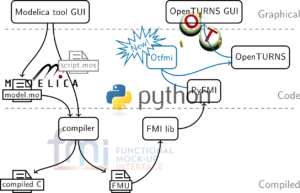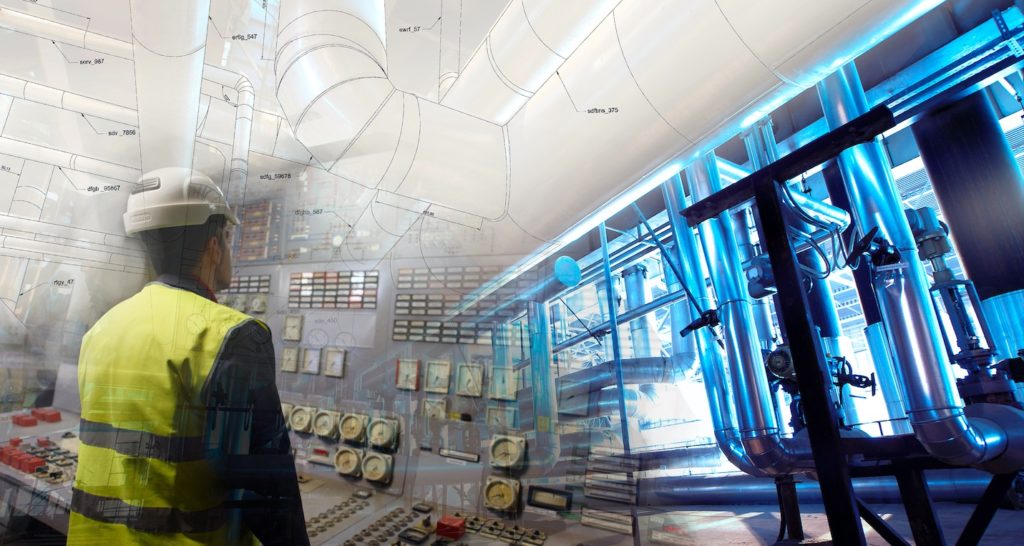Industrial systems are often complex and multiphysics. It means that they are composed of numerous interacting parts governed by heterogenous mechanisms. The system scale modelling named 0D/1D consists in representing these parts as interconnected or nested components to put the emphasis on the architecture et the dynamic interactions.
Modelica, Python and FMI norm
Modelica is an object-oriented free source code used to write and simulate such models in the mathematical form of algebra-differential systems. Its class structure is ideal for the constitution of libraries of combinable modules to create nested models at several scales or levels of abstractions, to consider the specificities of real systems, and monitor their evolution during design or operations.
The functional mock-up interface (FMI) norm aims at standardizing data interfaces of dynamic numerical models considered as black boxes. Thereby, it defines the functional mock-up unit (FMU) which is a zip archive including an XML format description file and C programs for the simulation itself. This standardization makes it possible, for example, to use optimization algorithms or to lead sophisticated numerical experiments with Modelica-based physical models.
Phimeca, partnering with EDF, recently developed an OtFMI module, an extension of the OpenTURNS statistic library to make it directly applicable to models programmed with Modelica. The Persalys graphic interface greatly eases the studies realization. The Modelica and Python software ecosystem is shown schematically in the figure below.

Modelica and Python ecosystem. The Python OtFMI module allows the algorithms of the OpenTURNS library to be used transparently with models from Modelica.
An array of skills and technologies
The combination of physical modeling and numerical simulation with data science and artificial intelligence seems to be taking place on its own. On the one hand, it paves the way for new, particularly flexible and efficient solutions to the problems encountered by engineers in designing, monitoring and maintaining industrial systems. On the other hand, recent technological advances (easier data collection, democratization of statistical learning methods, increased computing power, etc.) make it possible to engage in it pragmatically, hoping for a rapid return on investment. Off-the-shelf solutions sometimes bring interesting gains and help initiate the process. However, it is often necessary to combine them, adapt them or even rethink them more in depth to solve real complex problems and deploy solutions on an industrial scale.
Designing the “digital twin” of a real system requires to make use of a vast array of diverse skills:
- In-depth knowledge of industrial process,
- Physical modelling and numerical simulation,
- Sensors and measurement,
- Database management,
- Signal processing and data analysis,
- Statistical learning and artificial intelligence,
- Software and interfaces development…

The challenge is to encounter a compromise between a fast development for a return on investment in the medium term and the control of key links, which is the only guarantee of durability. It is also important to establish an “integrated” development strategy: for example, a physical model must be designed from the beginning with a clear purpose in mind because the possibility of combining it with artificial intelligence algorithms depends heavily on initial scientific and technical decisions. Phimeca provides its customers with its own skills (specifically in physical modelling and statistical learning) and the ones from its network of partners to support the customers in this approach, from the data and knowledge preliminary listing and the need formalization, up to the industrial deployment and interfaces development for the final customers.
